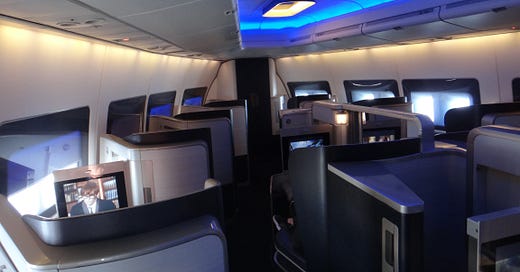Up Front Economics
First class is in demand but sales are down because of classic marketing errors
Back in the 80s and 90s British Airways ads used to joke that it was too expensive for your business to NOT fly first class. Like many jokes it contained a grain of truth – flying first, arriving refreshed, sealing the deal and leaving a happy customer sounds much better than losing a client because you are tired and not at your best.
But these days busi…



